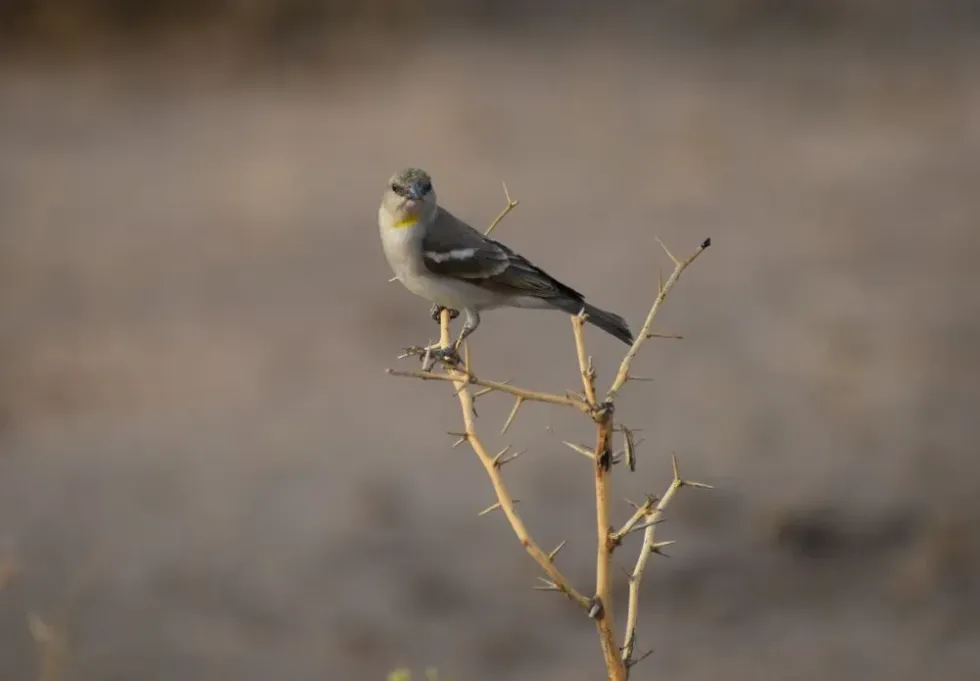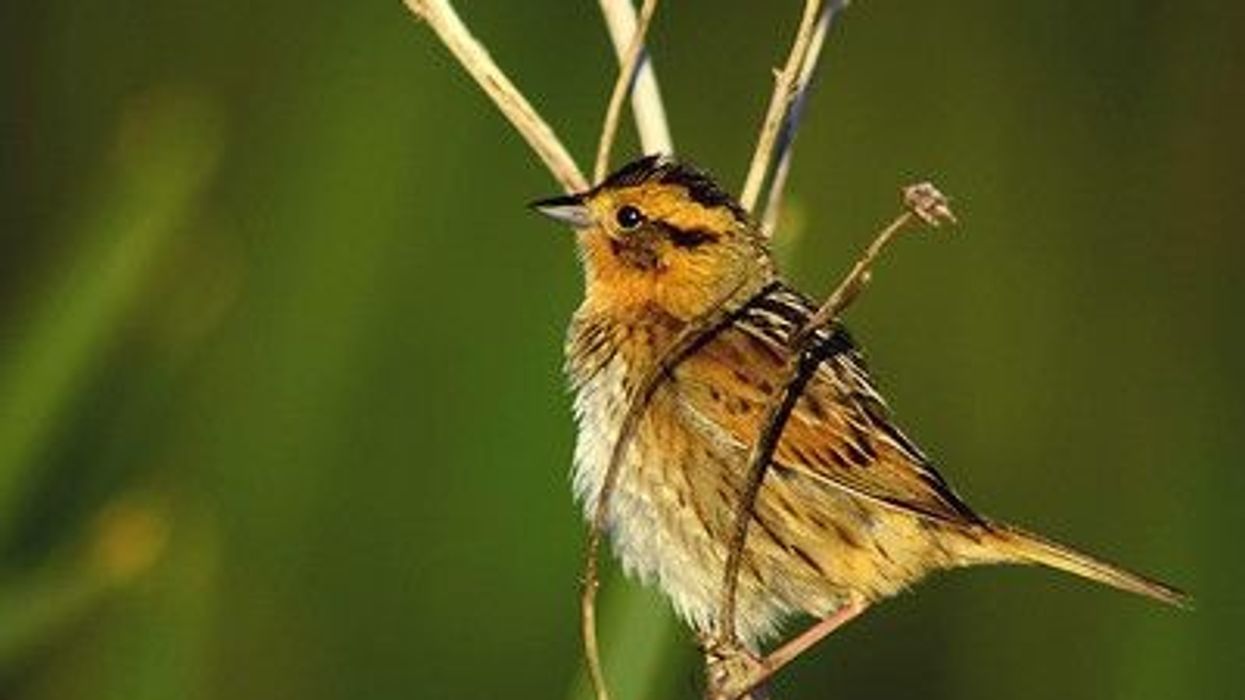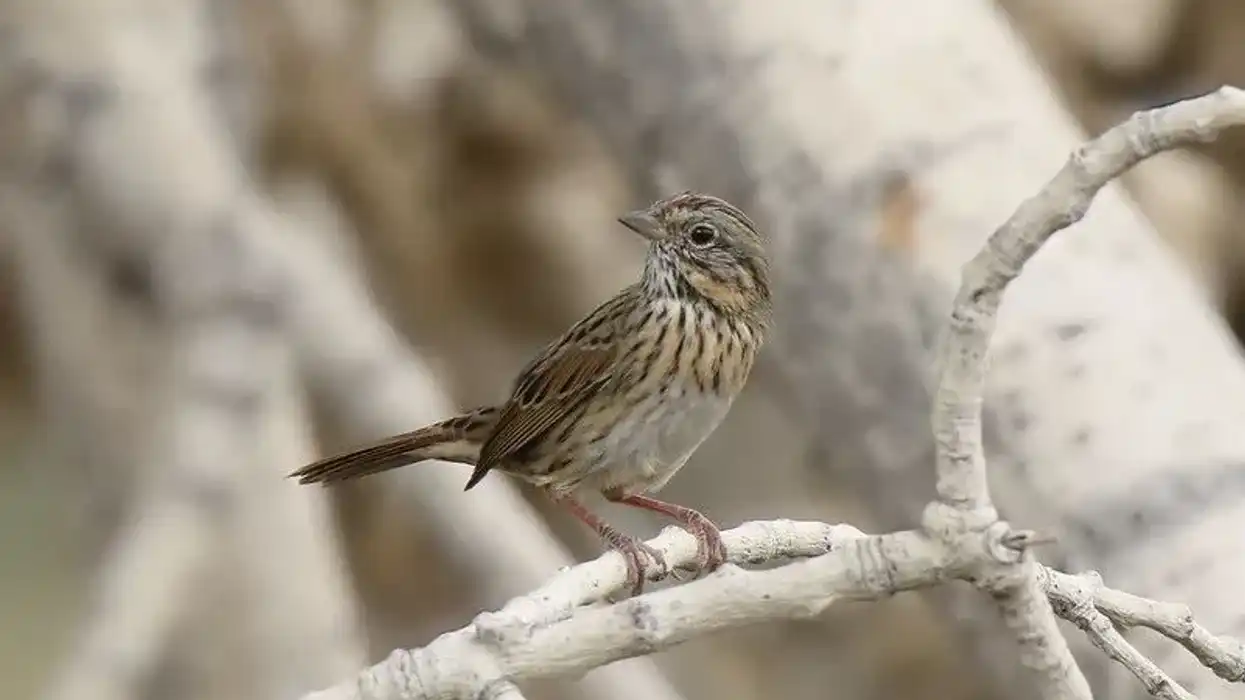The yellow-throated sparrow was first described by British army zoologist Edward Burton in 1838. They belong to the order Passeriformes and the family of Passaridae. They are mostly seen in countries like India, Pakistan, Myanmar, Turkey, Kuwait, and more.
They are mostly seen near open gardens, pine forests, and palm groves. They are small, beautiful birds like any other sparrow, and are well known for the yellow patch on their throat. They have a cone-shaped bill whose color differs in males as well as females.
They lay eggs in tree cavities in a clutch of three to four. Occasionally, they might lay five eggs. Mostly, the female bird takes care of their chicks and their breeding season also differs depending upon the habitat.
These bird species have two subspecies and are widely distributed in southeastern countries. They feed on nectar, small insects, and berries. They are not rare and are listed as Least Concern by the IUCN.
If reading about small sparrow birds really entertains you, then do learn some interesting fun facts about the chipping sparrow and Eurasian tree sparrow.
Yellow-Throated Sparrow Interesting Facts
What type of animal is a yellow-throated sparrow?
They are beautiful small birds with a yellow throat and many times they are confusedly categorized as yellow-spotted petronia (Petronia pyrgita), which is native to Africa.
What class of animal does a yellow-throated sparrow belong to?
These species belong to the class of Aves. They are from the order Passeriformes and the family Passaridae. They are from the genus Gymnoris. They are well known by the scientific name Gymnoris xanthocollis.
How many yellow-throated sparrows are there in the world?
There are many sparrow (Gymnoris xanthocollis) birds in the world. With their wide distribution and wide range of habitat, their exact number is not being estimated.
Where does a yellow-throated sparrow live?
The chestnut-shouldered petronia has a wide range of maps. They are found in the majority of central Asian countries, such as India, Pakistan, Bangladesh, Sri Lanka, and Myanmar.
They are even spotted flying around the Middle East countries like Turkey, Kuwait, Jordan, Iraq, and Iran. They can mostly be spotted in open forests, gardens, and scrub habitats. According to the Cornell Lab of Ornithology, their range map is wide and it is still not clear how far land they live in.
What is a yellow-throated sparrow's habitat?
Similar to their wide range of maps and distribution, these species have a wide habitat depending upon the season and place. They can be found near palm groves, bottomland woods, pine forests, and swamps, etc.
During their breeding season, they are mostly seen in bottomland wood streams. In the south, they live in pine forests and cypress swamps, whereas, during winters they are seen in palm groves. In India, they are seen in open areas of gardens, scrub-forest, cultivated areas of hedgerows, and river bottoms with trees.
Who do yellow-throated sparrows live with?
The Gymnoris xanthocollis lives in small groups and is a solitary bird by nature.
How long does a yellow-throated sparrow live?
Generally, how long they survive or live is not evident, but from a few resources, it is clear that their long lives are stable and they live long as per their natural age.
How do they reproduce?
There have been few records of how they breed. In general, few facts are available from which it can be acknowledged that the breeding season is from the month of April to July in Afghanistan and from the month of April to May in India.
The nest is built by the female birds alone and is rarely assisted by their male counterparts.
The nest is made of small feathers, dried grass, and wool. This almost covers up the gaps and holes in the nest made in tree holes.
The eggs are laid in groups of three to four and, rarely, the female might lay five eggs.
The eggs are mostly incubated by the female birds and the young chicks are taken care of by both parents. Generally, the small white eggs laid hatch in 12-14 days, and on hotter days, the female might even leave the nest and eggs alone.
What is their conservation status?
These species have a wide range and their conservation status on the IUCN list is Least Concern.
Yellow-Throated Sparrow Fun Facts
What do yellow-throated sparrows look like?
The Gymnoris xanthocollis is a beautiful small bird species well known for its yellow throat feathers. They have a long, pointed, cone-shaped bill. The female birds have pale white plumage and thin, prominent dark eye-stripe markings on their heads.
These female birds do not have small feathers. Their upper body is pale brown in color, while the under-body parts are off-white and paler near the belly area. The female bill is light brown to pink in color.
The male birds are similar to female birds, but the male species have more uniformity in color. The head is pale gray with a dark gray eye stripe.
The bills of the male birds are black in color. Their breast part is light brown to gray with a yellow-colored thicker stripe on the throat which is almost thinner or not visible in their throat.

How cute are they?
The sparrow, Gymnoris xanthocollis, is a small, cute bird species well known for its yellow color patch on its throat. They are cute and attract viewers' attention.
How do they communicate?
The Gymnoris xanthocollis generally use their vocals to communicate with their social small groups or gatherings. The yellow-throated sparrow's song or vocal sound is pleasant to hear similar to the golden-crowned sparrow.
How big is a yellow-throated sparrow?
The sparrow, Gymnoris xanthocollis, has a wingspan of 3-3.1 in (7.7-8 cm).
How fast can a yellow-throated sparrow move?
The sparrow, Gymnoris xanthocollis, flying speed has not been recorded.
How much does a yellow-throated sparrow weigh?
The weight of the male and the female birds is around 0.67 oz (19 g). The grasshopper sparrow weighs almost similar to these sparrows.
What are the male and female names of the species?
The male and female species do not have any specific names.
What would you call a baby yellow-throated sparrow?
The babies of these species are called chicks.
What do they eat?
They feed and search for insects like beetles, moths, caterpillars, grasshoppers, and ants in open gardens and scrub forests. They search for fruits, berries, and nectar from different plants and trees. Other sparrows have a similar diet, too.
Are they dangerous?
They are not dangerous and their feeding on crop plants is not recorded.
Would they make a good pet?
No they are not suitable as pets.
Did you know...
The order Passeriformes and the family Passeridae are known for their Old World sparrows and this species belongs to the same family. The search for their exact range map is still continuous.
They have two subspecies: Gymnoris xanthocollis transfuga and Gymnoris xanthocollis xanthocollis. They all belong to the same Old World sparrow family.
Some sparrows like the yellow-throated sparrow and golden-crowned sparrow have the color yellow on them.
What is a distinguished feature of a yellow-throated sparrow?
The most distinguished feature of the yellow-throated sparrow is the yellow color patch on their throat, which is less seen in females and more evident in males from most photos seen on different resources.
Who identified the bird as a yellow-throated sparrow?
The British army surgeon and zoologist, Edward Burton, identified the bird as a yellow-throated sparrow in 1838.
Here at Kidadl, we have carefully created lots of interesting family-friendly animal facts for everyone to discover! Learn more about some other birds from our fox sparrow interesting facts and savannah sparrow facts for kids.
You can even occupy yourself at home by coloring in one of our free printable yellow throated sparrow coloring pages.










